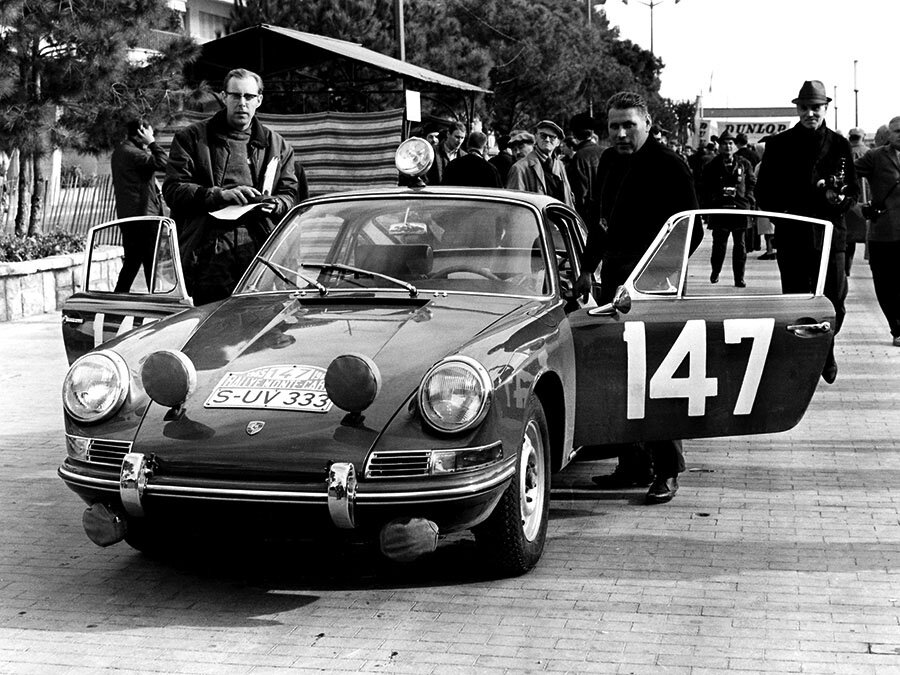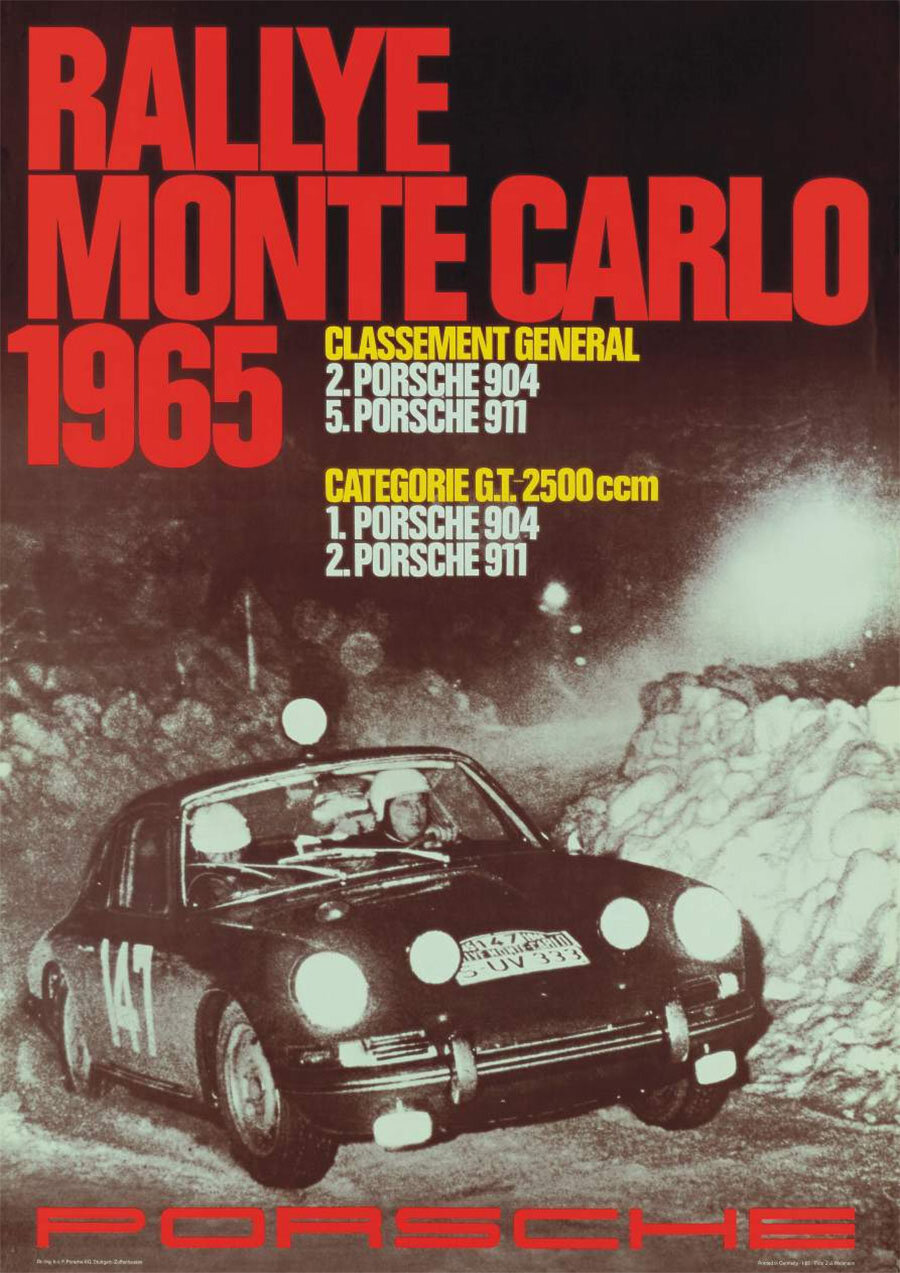Guide: Porsche 911 2.0 O-series Rally/65 - a Historical & Technical Appraisal
/BACKGROUND
After 911 production got underway in August 1964, Porsche were keen to garner some extra publicity for their important new car.
Given the firm’s long-standing and successful motor sport participation, a high profile competition outing for the 911 seemed like a good way to boost its performance and reliability credentials.
At this early stage, a prolonged factory assault on a major series was out of the question.
Porsche’s 904 GTS was already the dominant force in the under two-litre class of the World Sportscar Championship and, for 1965, the world series would again run to the Group 3 rules that favoured extreme limited production models like the 904 as opposed to true Grand Tourers such as the 911.
By contrast, the European Touring Car Championship was organised to Group 2 rules and comfortably enough 911s had been built to satisfy the 1000-car production requirement for entry. However, the financial requirement of a season-long commitment didn’t fit with Porsche’s plans.
Porsche’s public relations manager and racing department chief, Huschke von Hanstein, reasoned the ideal platform for the 911 was rallying. The car’s rear-engined layout was well-suited to the special stages and very few modifications would be required to field a potentially front-running car. Porsche could also pick and choose when and where they ran.
By far the most prestigious event on the international calendar was the Monte Carlo Rally. Held every January, it was winter’s highest profile motor sport contest and attracted major media interest.
PREPARATION OF R1
To contest the Monte, a Ruby Red 1965 model year 911 Coupe (chassis 300055, also known as R1) was plucked from the production line. It underwent careful preparation but deviated only slightly from the standard specification.
Modifications included uprated rear brakes, a rear anti-roll bar, Boge front dampers and a long-range 100-litre fuel tank.
The Type 901/02 engine was equipped with polished ports, hot camshafts, Weber carburettors, a lightened flywheel, platinum spark plugs and free-flow exhaust.
The compression ratio was increased from 9.1 to 9.8:1 and output rose from 130bhp at 6100rpm to 160bhp at 6600rpm.
Porsche modified the standard five-speed transmission to include a ZF limited-slip differential, lower final drive ratio and competition clutch.
Three Marchal spot lights were fitted, two on the front lid and the one on the roof.
A rear traction bar was added for the co-driver to stand on. Leather straps were fitted above the engine cover for the co-driver to hold when the traction bar was in use.
Chassis R1 was to be driven on the Monte by Herbert Linge and Peter Falk.
Linge wanted the gear lever moved back a little but otherwise the cockpit was simply enhanced with standard rally fare: a roll cage, a driver’s bucket seat, a Halda Twinmaster and a pair of Heuer stopwatches.
Despite the additional equipment, the absence of soundproofing and a few other unessential parts meant overall weight was unchanged at 1030kg.
ENTRY
Linge and Falk would not be the only factory representatives on hand at the 1965 Monte.
Porsche also entered a works 904 Carrera GTS, a car that, in theory, seemed totally unsuited to the event.
In 1964, the 904 in question (chassis 006) had successfully contested the Targa Florio, Nurburgring 1000km, Le Mans 24 Hours and Tour de France but a potentially snowy Monte would be an altogether different proposition. Eugen Bohringer would be accompanied by Rolf Wutherich in the low slung silver car.
Porsche’s preparations for the 1965 Monte Carlo Rally began in late 1964. The crews went testing at Monza and also drove the gruelling course twice.
1965 MONTE CARLO RALLY
The nine-day event started on January 16th at points all over Europe. From Warsaw, Stockholm, Minsk, London, Frankfurt, Paris, Athens and Lisbon, competitors converged on the Alpine city of Chambery before ultimately heading to Monte Carlo.
The Porsches were part of the Frankfurt party which lost five of its 26 starters en route to Chambery owing to masses of snow in Holland, Belgium and France.
When the assembled crews finally made it away from Chambery, sudden blizzards in the Massif Central and Alpes Maritimes further decimated the entry.
This 380-mile section that headed into the mountains behind Monaco started on a clear moonlit night but officials warned heavy snow was expected with the possibility of winds reaching near hurricane force.
It proved a very tough test for the cars and drivers and, of the 35 entries that finished the stage, only 22 did so within the allotted time. Experienced competitors said they had never driven under such appalling conditions; since the start of the rally, an astonishing 202 cars had been forced to retire.
Best classified after the stage from Chambery was the works Mini Cooper S of Timo Makinen / Paul Easter. The works Citroen DS19 of Lucien Bianchi / Jean Demortier was second and Bohringer’s 904 was third. Linge and Falk held seventh in the 911.
Frightful blizzards were encountered throughout the remaining sections and, at times, even 30mph was perilous. The icy, snow-covered roads contained every possible type of hazard and Bianchi was one of those who failed to finish as he went off and hit a tree while driving on the wrong tyres.
Leader Makinen lost four minutes to stop for an essential tyre change but Bohringer (who had been promoted to second by Bianchis’s retirement) lost no further time in the 904. However, while he was equal with Makinen on penalties, the Porsche was far behind on special stage times.
In the 911, Linge and Falk had saved their new Hakkapeliitta studded tyres for the last night of the rally when they would be heading over the notorious Col de Turini. With the works 904 second, the decision was made that Bohringer should have the studded tyres instead of Linge.
The 911 nevertheless went on to finish a very respectable fifth overall and second in class 2/4 (behind the 904). With best times in eight of the eleven special stages, Timo Makinen’s works Mini Cooper S took a convincing victory.
POST MONTE
Porsche did not participate in any further 1965 rallies. They returned to the sport in 1966 and variously ran up to three works cars in around half a dozen major events.
As for chassis R1, it was retained for testing duty through to November 1966 at which point it was sold engine-less to a Munich dealer.
Text copyright: Supercar Nostalgia
Photo copyright: Porsche - https://www.porsche.com



































